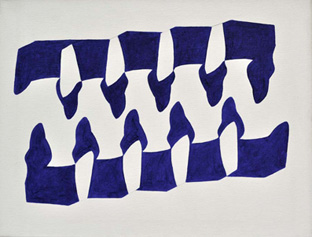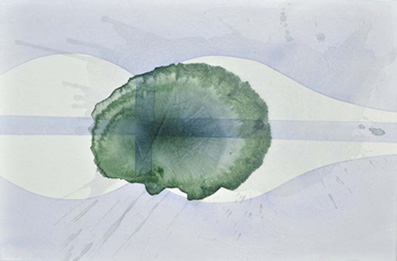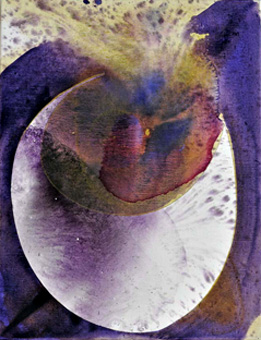The Primal Form is pneumatic
To me as an artist working abstractly, the forms I render are essential. Using templates I present clear, well-defined forms. Basically, these forms do not represent anything, referring only to themselves. Some have a stronger tendency towards meaning than others.
To me, the Primordial Form is a form from which all other forms can arise. I have the idea that all forms I make originate from one single form, or can at least be reduced to one form: the Primal Form.
In the beginning there was gas. This gas turned into balls of fire. These balls of fire emanated heat in all directions simultaneously and coagulated into round planets. The air bubble under water and the soap bubble floating in the air are also round. In addition, water elements often have a round appearance. The water in the river makes round lines in the landscape.
The human body is round on the outside. Did you ever see a human being or animal whose body shows a straight line? The muscles and organs are round and pliable to facilitate movement and transport.
It can be argued that forms from nature are round.
I consider the Primal Form a concrete form, a form consisting of a round figure from which a new or different form splits off.
While I work predominantly two-dimensional, I wanted to create an three-dimensional form to make the Primal Form concretely visible. I imagined it to have originated from gas. That is why I designed a form that can be blown like a glass object.
Creating the object proved to be more difficult than I had expected. Its shape is subject to growth, causing the object to constantly take on new shapes. To what extent do the two halves differ from each other and what are their proportions? Will the two parts – or the form remaining in between – not be too round, or too sharp?
In the past, the circle and a perfectly round sphere tended to be seen as symbols of utmost purity and had the meaning of ‘infinity’ attached to them. But life is about being born and dying, to which cell division is central. Division takes place, which means growth. And for a form it is essential to have the possibility of change, to show development.
Life forms touch on the moment when the pressure within a sphere is not constant. At that moment, the sphere is no longer perfectly round, but rather egg-shaped. Compare this to the slightly oblate shape of planet earth. A bulge might emerge from the sphere, like a mountain being formed when pressure becomes too strong on a certain spot and the earth emits magma. Similarly, a glass sphere will form bulges as soon as the glassblower increases the pressure; the soap bubble in which the pressure becomes too high will burst.
Creating the object proved to be more difficult than I had expected. Its shape is subject to growth, causing the object to constantly take on new shapes. To what extentdo the two halves differ from each other and what are their proportions? Will the two parts – or the form remaining in between – not be too round, or too sharp?
In addition, the Primal Form is pneumatic. From its origins it may take on different appearances, depending on the amount of air added. Likewise, difference in air pressure affect it. As a result, the forms derived from the Primal Form may take on all kinds of appearances, even including a straight line or a square.
The Primal Form meanders, going with the flow. It is flexible and conforming. The Primal Form can be changed endlessly. The possibility to constantly create from this form is implicit in it. From there, derived forms or appearances emerge as products to build upon and work magic. The forms are there; I just present them and apply them. Sometimes this works really well, with the form offering the opportunity to freely read meanings into it. At other times, a form emerges with no other meaning apart from the appearance in which it presents itself to us. This implies the possibilities and limitations of the form.
Amsterdam, July 26, 2010
Vincent van Oss




